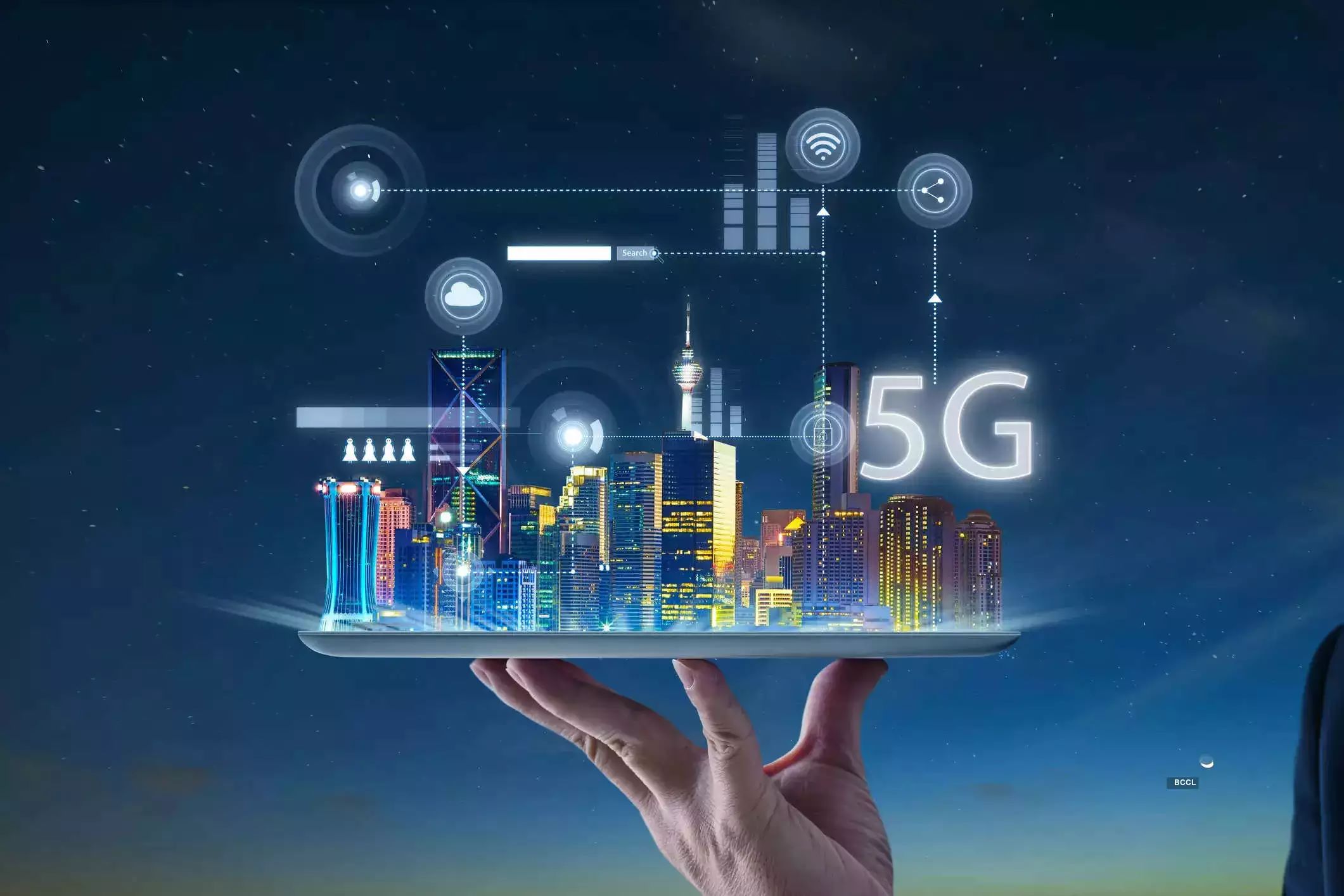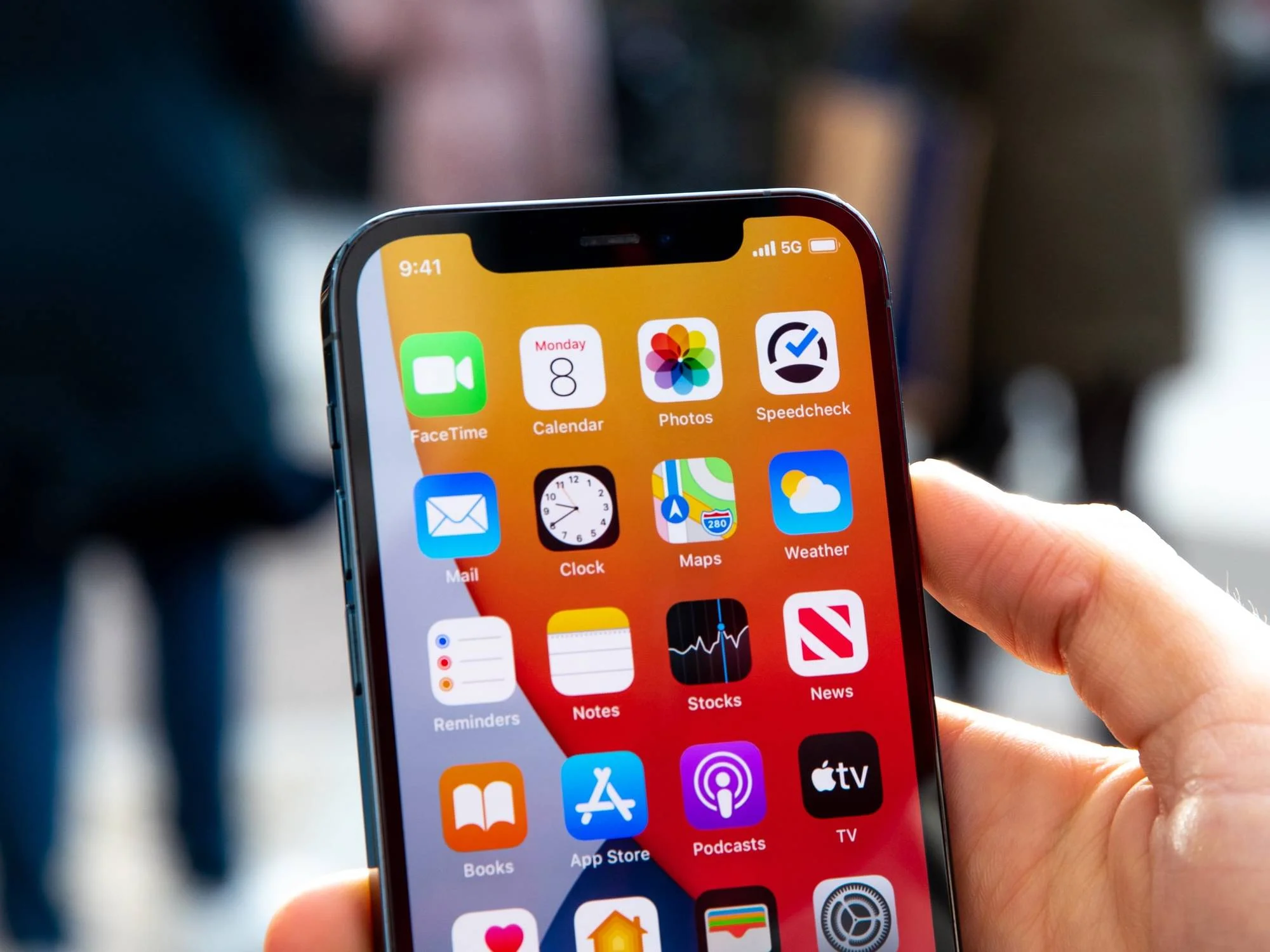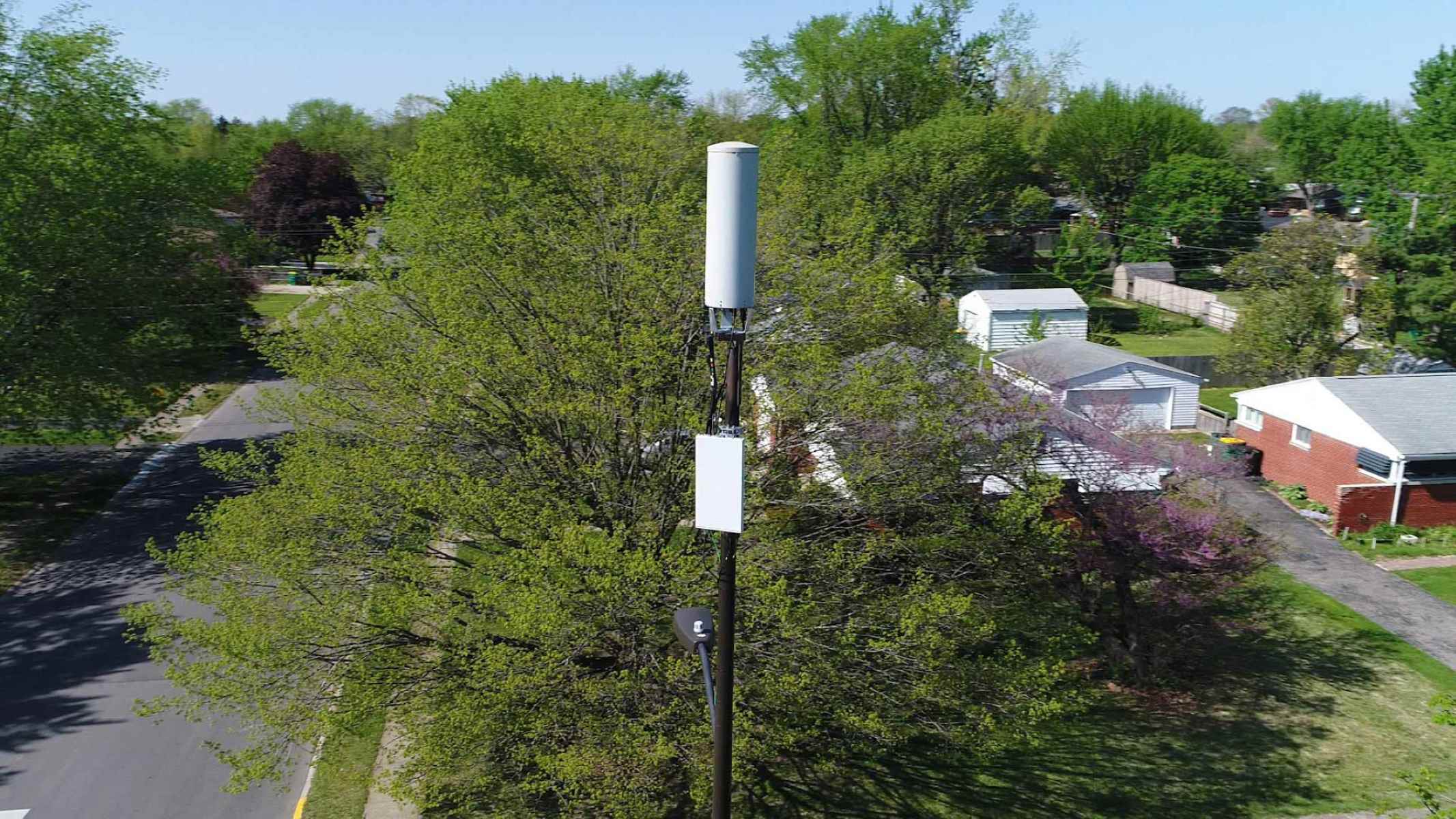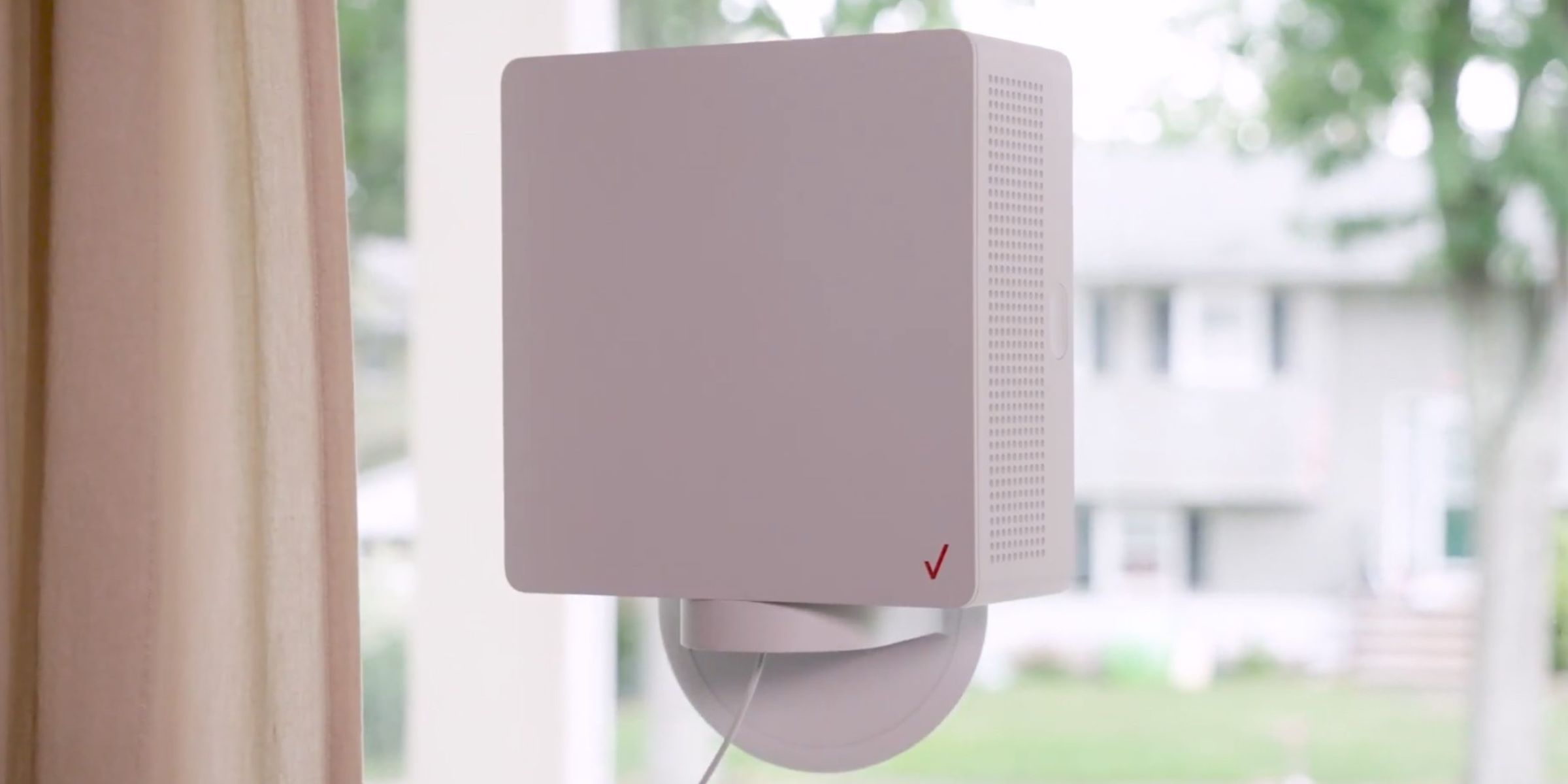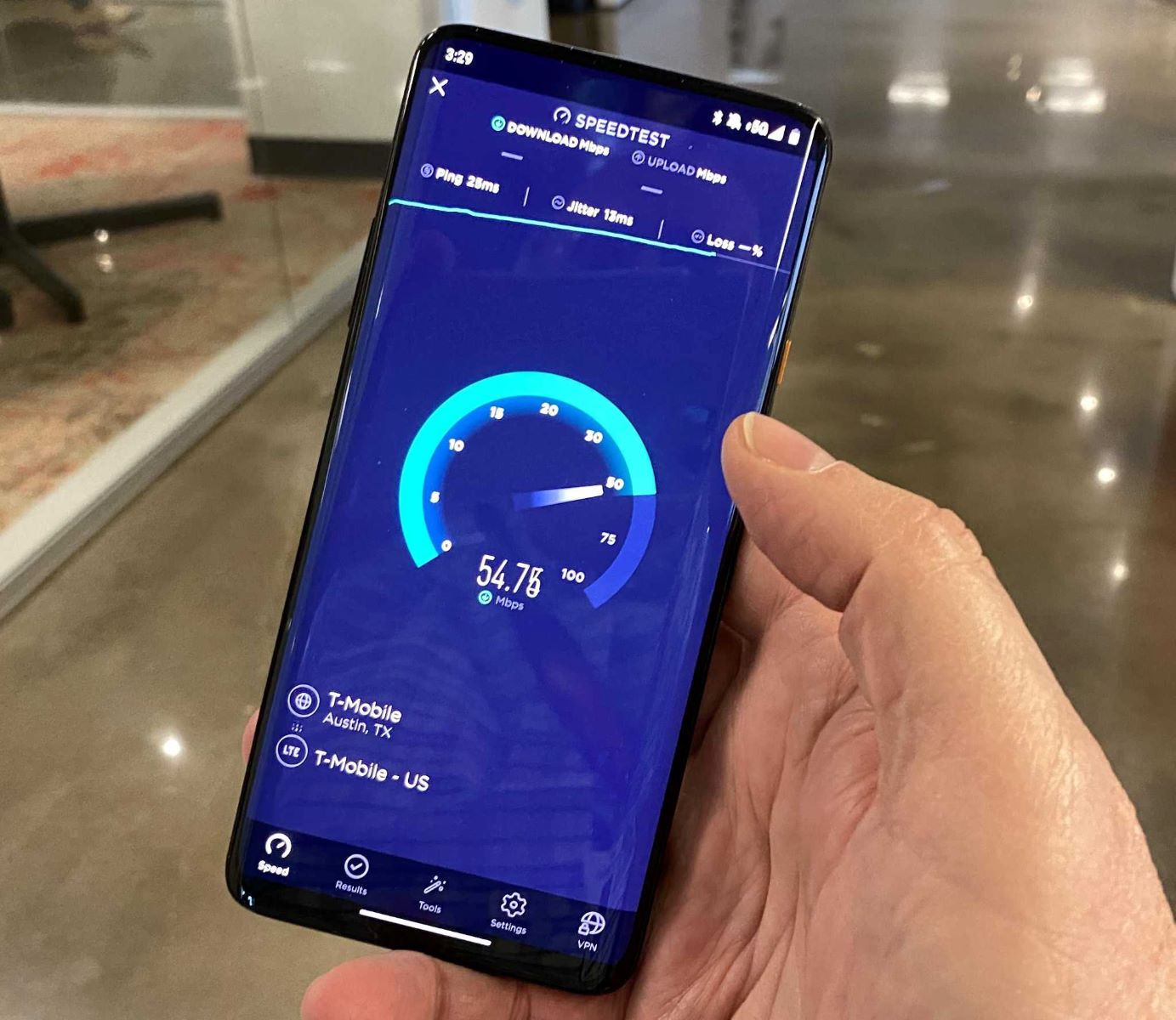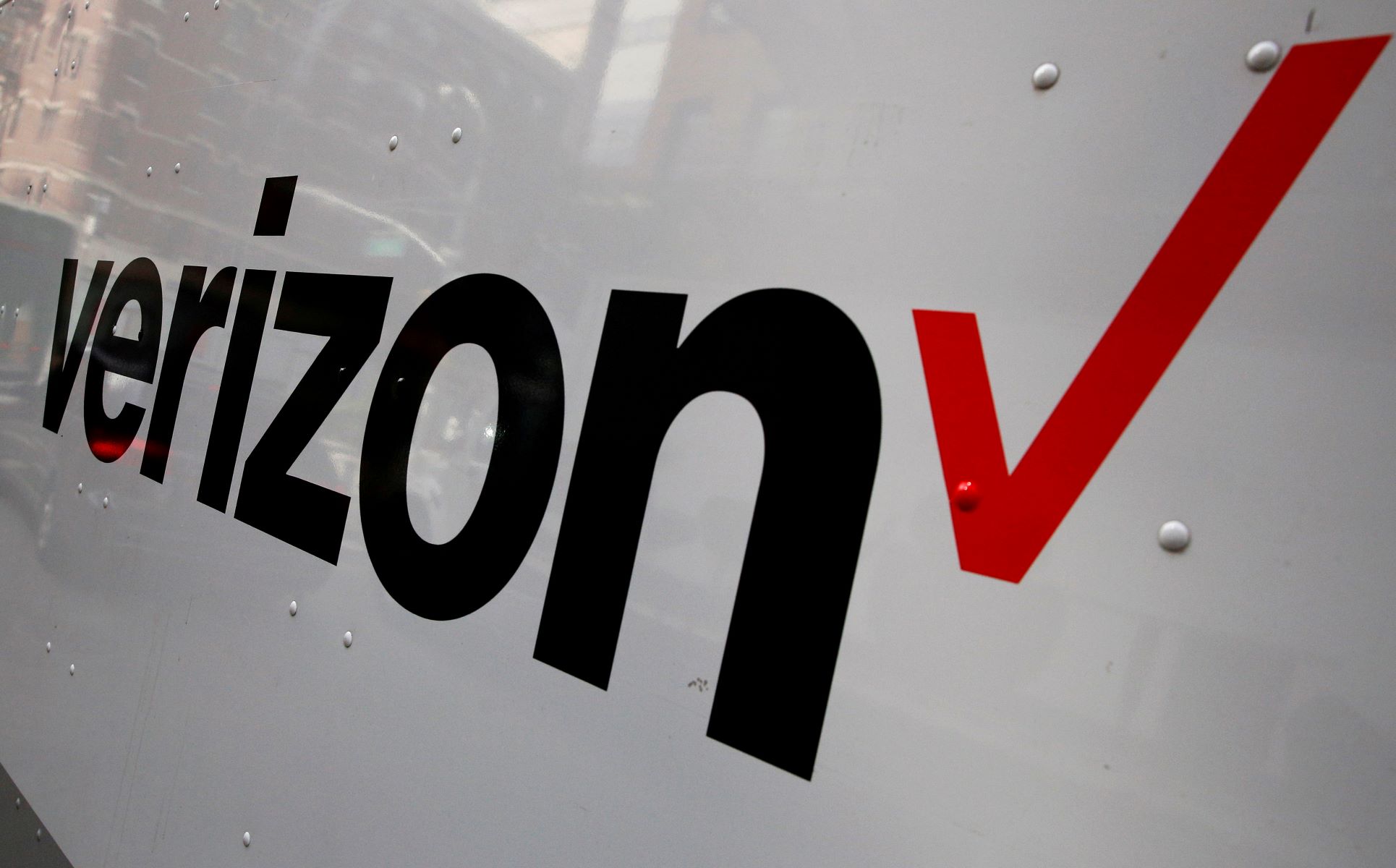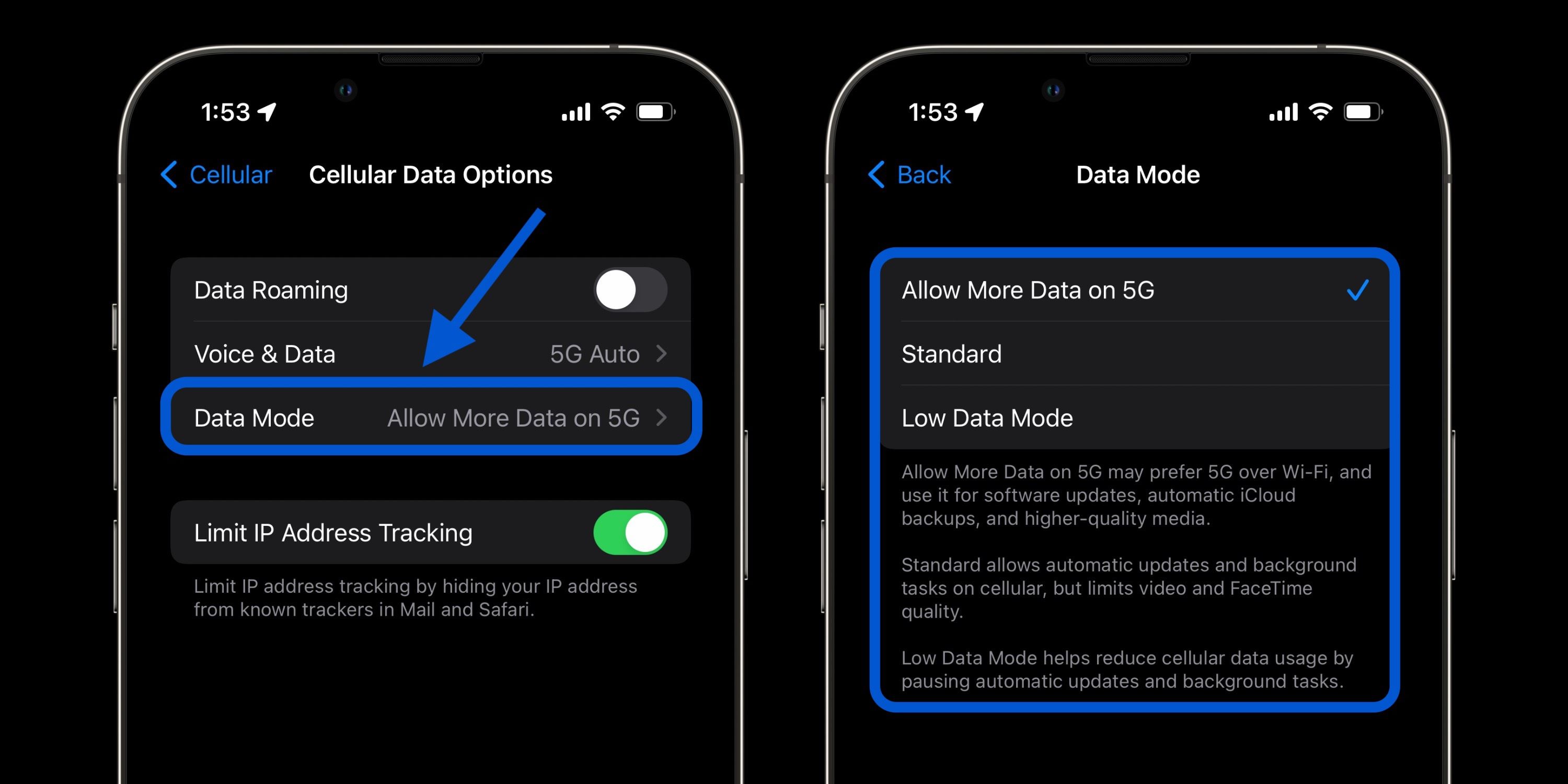What is 5G?
5G, short for Fifth Generation, refers to the latest and most advanced wireless communication technology. It is the successor to 4G LTE and offers significantly faster speeds, lower latency, and increased capacity. 5G aims to revolutionize our digital experiences and unlock new possibilities in various industries.
Unlike its predecessors, 5G operates on a higher frequency band, enabling the transmission of larger amounts of data at incredibly fast speeds. This technology utilizes smaller and more densely packed cells, allowing for increased network capacity and minimized congestion in areas with high user density.
One of the main advantages of 5G is its incredible speed. It has the potential to offer download speeds of up to 10 gigabits per second (Gbps), which is around 100 times faster than 4G. This means you can download large files, stream high-definition videos, and use bandwidth-intensive applications seamlessly and without interruptions.
Another key characteristic of 5G is its low latency. Latency is the time it takes for data to travel from the source to its destination and back. With 5G, latency is expected to be reduced to as low as 1 millisecond. This near-instantaneous response time will enable applications that require real-time interaction, such as remote surgery, autonomous vehicles, and virtual reality experiences.
Moreover, 5G technology offers greater reliability and network efficiency. It provides improved signal strength, coverage, and stability, even in crowded areas. This means fewer dropped calls and better overall connectivity for users.
Additionally, 5G is designed to connect a wide range of devices simultaneously. This includes not only smartphones and tablets but also IoT (Internet of Things) devices, smart homes, wearables, and other connected devices. The ability to connect and communicate with multiple devices seamlessly opens up a world of possibilities for automation, smart city infrastructure, and enhanced productivity.
In summary, 5G is the next generation of wireless technology that promises faster speeds, lower latency, increased capacity, and improved connectivity. It will pave the way for innovative applications and services, transforming industries and the way we live, work, and communicate.
Benefits of 5G Technology
The emergence of 5G technology brings with it a myriad of benefits that will revolutionize numerous aspects of our lives. Here are some key advantages of 5G:
1. Lightning-fast Speeds: 5G technology provides unprecedented download and upload speeds, allowing for seamless streaming of high-definition videos, lag-free online gaming, and instant downloads of large files. This high-speed connectivity will enhance user experiences and enable the adoption of bandwidth-intensive applications.
2. Low Latency: With 5G, the delay between the initiation of an action and the response will be greatly reduced. This low latency is particularly critical for applications that demand real-time interactions, such as autonomous vehicles, remote surgery, and virtual reality experiences. The minimal delay will enable faster decision-making and enhance safety in various industries.
3. Massive Device Connectivity: 5G is designed to support a vast number of connected devices simultaneously. This ability to connect billions of devices, including smartphones, IoT devices, wearables, and smart home devices, will drive the growth of the Internet of Things ecosystem. This interconnectedness will fuel automation, efficient resource management, and enable advanced smart city infrastructure.
4. Enhanced Reliability and Stability: 5G technology improves signal strength and stability, even in crowded areas. This ensures consistent and reliable connectivity, reducing dropped calls and network interruptions. The enhanced stability will enable users to stay connected seamlessly, enhancing productivity and communication capabilities.
5. New Business Opportunities: The advent of 5G opens up new avenues for businesses and entrepreneurs. It enables the development of innovative applications and services, such as augmented reality, virtual reality, and immersive gaming experiences. These new business opportunities will stimulate economic growth and create new job opportunities.
6. Transformative Technologies: 5G technology will act as a catalyst for transformative technologies such as autonomous vehicles, smart cities, remote healthcare, and smart factories. The low latency, high-speed connectivity, and massive device connectivity of 5G will enable these technologies to reach their full potential, leading to safer and more efficient transportation, sustainable cities, enhanced healthcare access, and optimized industrial operations.
In summary, the benefits of 5G technology extend far beyond just faster speeds. From enabling advanced applications and services to revolutionizing industries and improving our everyday lives, 5G technology holds tremendous potential to reshape the way we interact, communicate, and innovate.
The Current Status of 5G Deployment
The deployment of 5G technology is well underway, with various countries and telecommunications companies making significant progress in rolling out this next-generation network. While the exact timeline and coverage may vary depending on the region, here is a general overview of the current status of 5G deployment worldwide:
1. Early Adopters: Several countries, including the United States, South Korea, and China, have emerged as early adopters of 5G technology. These countries have made substantial investments in infrastructure and have already launched commercial 5G networks in select cities. Major metropolitan areas and urban centers are typically the first to witness 5G coverage.
2. Expanding Coverage: As the technology matures and more telecom companies join the race, the coverage of 5G networks continues to expand. Major cities around the world are being prioritized for deployment, with a focus on densely populated areas. However, rural areas and less populated regions may experience a slower rollout due to infrastructure challenges and lower demand.
3. Global Efforts: Various international organizations, such as the International Telecommunication Union (ITU) and the Global System for Mobile Communications (GSMA), are working to standardize 5G technology and ensure interoperability. This collaboration aims to streamline the deployment process and facilitate a seamless transition to 5G networks on a global scale.
4. Infrastructure Upgrades: Deploying 5G requires significant infrastructure upgrades, including the installation of new base stations and the deployment of small cells in close proximity to each other. This extensive infrastructure development is a complex and time-consuming process, but it is a crucial step in expanding 5G coverage and delivering its promised benefits.
5. Smart City Initiatives: Many cities worldwide are embracing the potential of 5G technology to transform into smart cities. These initiatives involve integrating 5G networks with various urban systems, such as transportation, energy management, and public safety. The deployment of 5G in smart city projects will enable advanced services and enhance the quality of life for residents.
Despite the progress made in 5G deployment, it is important to note that achieving widespread coverage will take time. Various factors, such as regulatory approvals, spectrum allocation, and the availability of compatible devices, contribute to the pace of deployment. As the technology continues to evolve, we can expect the coverage and speed of 5G networks to improve, eventually reaching a point where they become the norm rather than the exception.
Factors Affecting the Timeline for 5G in Your Area
The deployment of 5G technology in your area can be influenced by various factors that impact the timeline and availability of this next-generation network. Here are some key factors that affect the rollout of 5G in different regions:
1. Infrastructure Development: The deployment of 5G requires a robust infrastructure, including the installation of new base stations and the deployment of small cells. The readiness of the existing infrastructure and the speed at which the necessary upgrades are carried out can significantly affect the timeline for 5G in your area. Areas with well-developed telecommunications infrastructure may experience faster deployment compared to regions that require extensive infrastructure development.
2. Spectrum Availability: 5G networks operate on various frequency bands, and the availability of spectrum plays a crucial role in the deployment process. Telecommunications regulators need to allocate and assign the necessary spectrum to network operators for 5G use. The timeline for 5G in your area can be affected by how quickly spectrum is made available and how efficiently it is managed and distributed among operators.
3. Regulatory Approvals: The deployment of 5G involves complying with regulatory requirements and obtaining necessary approvals from government authorities. These approvals include permits for infrastructure installation, spectrum licensing, and adherence to specific guidelines regarding safety and electromagnetic radiation exposure. The timeline for 5G in your area can be influenced by the efficiency and speed of obtaining these regulatory approvals.
4. Vendor Readiness: The availability of 5G network equipment from different vendors can impact the timeline for deployment. Network operators rely on equipment from vendors to build and upgrade their networks. Delays in the production and availability of 5G equipment can slow down the deployment process in your area.
5. User Demand: The demand for 5G services plays a significant role in determining the priority of deployment in different areas. Telecom companies often prioritize regions with higher user demand and population density to ensure a satisfactory user experience. Areas with denser populations and higher demand for high-speed connectivity are more likely to see earlier deployment of 5G networks.
It is essential to consider that the timeline for 5G deployment can vary widely from one area to another. The factors mentioned above, along with regional economic considerations and government policies, can influence the availability and pace of 5G in your area. Staying informed about local infrastructure developments, spectrum auctions, and operator announcements will provide insights into the expected timeline for 5G adoption in your region.
How to Check if 5G is Available in Your Area
If you’re eager to experience the benefits of 5G technology, you may be wondering how to check if it’s available in your area. Here are a few ways to determine 5G availability in your location:
1. Contact Your Service Provider: The easiest way to find out if 5G is available in your area is to get in touch with your service provider. Reach out to their customer service or check their website for information on 5G coverage. They will be able to provide you with the most accurate and up-to-date information on the availability of 5G in your specific location.
2. Check Online Coverage Maps: Most service providers have online coverage maps that show the areas where 5G is available. Visit their website and look for the coverage map section. Enter your address or browse the map to see if 5G coverage is indicated in your area. Keep in mind that these maps may not always be 100% accurate, so it’s best to cross-reference the information with other sources.
3. Use Third-Party Websites and Apps: Several independent websites and apps provide crowd-sourced coverage maps that show 5G availability based on user reports. These platforms aggregate data from real users to give you an idea of 5G coverage in different areas. Examples of such platforms include OpenSignal, Ookla’s Speedtest, and Sensorly. You can download their apps or visit the respective websites and search for your location to view 5G availability.
4. Follow Tech News and Updates: Stay updated with the latest tech news and announcements from major telecom companies. They often make public announcements when they launch 5G networks in new areas. Monitor industry websites, tech blogs, and news outlets to stay informed about the rollout of 5G in your region.
5. Join Online Communities and Forums: Engaging with online communities, forums, and social media groups focused on telecommunications and 5G technology can provide valuable insights. Members of these communities often share their experiences and discuss the availability of 5G in different areas. By participating in these communities, you can connect with people who have firsthand information about 5G coverage in your specific location.
Remember that 5G coverage is still expanding and may not be available in all areas. If 5G is not currently available in your area, it is worth noting that service providers are continually working to expand their coverage, and it may become available in the near future. Stay informed and regularly check for updates from your service provider to know when 5G will be available in your area.
Expected Rollout Plans for Major Carriers
With the increasing demand for 5G technology, major telecommunications carriers around the world have developed rollout plans to deploy and expand their 5G networks. While specific plans may vary by region and carrier, here is a general overview of the expected rollout plans for some of the major carriers:
1. Verizon: Verizon, one of the leading carriers in the United States, has already launched 5G Ultra Wideband in select cities and continues to expand its coverage. The company plans to bring 5G to more than 60 cities by the end of the year and aims to provide nationwide 5G coverage in the coming years.
2. AT&T: AT&T has rolled out 5G service in various cities across the United States, and its coverage is gradually expanding. The company is focused on leveraging low-band spectrum to provide broad 5G coverage, in addition to its existing 5G+ network, which offers faster speeds in select areas.
3. T-Mobile: T-Mobile has merged with Sprint to enhance its 5G capabilities. The carrier is rapidly expanding its nationwide 5G network, utilizing both low-band and mid-band spectrum. T-Mobile aims to cover 200 million people with 5G by the end of 2021 and aims to provide accessible 5G connectivity across the United States.
4. China Mobile: As one of the largest carriers in the world, China Mobile is heavily investing in 5G technology. The company has already launched 5G services and aims to deploy 5G networks in major cities across China, targeting nationwide coverage in the near future.
5. Vodafone: Vodafone is actively deploying 5G networks across its operating countries in Europe and other regions. The company plans to bring 5G to over 100 cities in Europe, offering faster speeds and improved connectivity to its customers.
6. SK Telecom: SK Telecom, a leading South Korean carrier, has been at the forefront of 5G deployment. The company has launched 5G in major cities in South Korea and continues to expand its coverage nationwide. SK Telecom is also working on developing innovative 5G services and use cases to enhance user experiences.
These are just a few examples of the expected rollout plans for major carriers. It’s important to note that rollout plans can change over time, as carriers respond to network demands and market conditions. It’s advisable to regularly check for updates from your specific carrier for the most accurate and up-to-date information on their 5G deployment plans in your area.
The Impact of 5G on Different Industries
The emergence of 5G technology carries the potential to transform various industries, revolutionizing the way they operate and opening up new possibilities. Here are some key industries that will experience the impact of 5G:
1. Healthcare: 5G will enable advancements in remote healthcare, telemedicine, and wearable devices. With ultra-low latency and high-speed connectivity, doctors can perform remote surgeries using robotic arms, and patients can receive real-time consultations and diagnoses. Wearable health devices will become more accurate and efficient, collecting and transmitting vital health data seamlessly for monitoring and diagnosis.
2. Transportation and Automotive: 5G will play a crucial role in the development of autonomous vehicles and smart transportation systems. It will enable vehicles to communicate with each other, infrastructure, and pedestrians in real-time, enhancing safety and efficiency. With 5G, traffic management systems will optimize traffic flow, reducing congestion and improving transportation logistics.
3. Manufacturing and Automation: The manufacturing industry will benefit from the low latency and high reliability of 5G to enable robotics and automation at a larger scale. Real-time monitoring and control of machinery and processes will optimize production, reduce downtime, and increase efficiency. Logistics and supply chain management will be enhanced, enabling seamless tracking and management of goods throughout the supply chain.
4. Media and Entertainment: 5G will enhance media and entertainment experiences, providing immersive augmented reality (AR) and virtual reality (VR) content. With high-speed connectivity and low latency, streaming services will offer smooth playback of high-definition and 4K/8K content. Live events can be broadcasted in real-time in immersive formats, creating engaging and interactive experiences for viewers.
5. Smart Cities: 5G forms the backbone of smart city infrastructure, facilitating connectivity and communication among various urban systems. Automated traffic management, smart lighting, waste management, and efficient energy distribution are some applications of 5G in smart cities. Real-time data collection and analysis will enable cities to optimize resource utilization, enhance safety, and improve the quality of life for citizens.
6. Retail and e-commerce: With 5G, the retail industry will experience enhanced in-store experiences through augmented reality product visualization, interactive advertising, and real-time inventory management. Consumers will enjoy seamless online shopping experiences with faster load times, immersive product visuals, and personalized recommendations.
These are just a few examples of how 5G will impact different industries. As 5G continues to evolve, new use cases and applications will emerge, driving innovation, improving efficiency, and transforming the way businesses and individuals interact in various sectors of the economy.
5G Use Cases and Applications
The deployment of 5G technology will unlock a multitude of use cases and applications, transforming various aspects of our lives. Here are some key areas where 5G will have significant impact:
1. Internet of Things (IoT): 5G will enable massive connectivity, facilitating the growth of the IoT ecosystem. Connected devices and sensors will communicate seamlessly, enabling smart homes, smart cities, smart grids, and intelligent transportation systems. The IoT will revolutionize industries such as agriculture, healthcare, logistics, and manufacturing, optimizing processes and enhancing efficiency.
2. Virtual and Augmented Reality (VR/AR): 5G’s low latency and high bandwidth will power immersive VR and AR experiences. From realistic virtual meetings and virtual travel experiences to interactive gaming and training simulations, 5G will enable seamless and immersive interactions, enhancing user experiences and opening up new avenues for entertainment, education, and enterprise applications.
3. Smart Agriculture: With 5G, precision farming techniques will become more efficient and automated. Farmers can use real-time data and analytics to monitor and optimize irrigation, soil conditions, pest control, and livestock management. This will lead to enhanced crop yields, reduced resource waste, and sustainable farming practices.
4. Remote Work and Telecommunications: 5G will enable seamless remote work capabilities, with ultra-fast speeds and low latency for video conferencing, cloud-based collaboration, and real-time data sharing. Remote workers will have better access to resources, allowing for increased productivity and flexibility. Telecommunications will also benefit from greater reliability and faster speeds, leading to improved voice and video call quality.
5. Smart Energy and Utilities: 5G will empower smart energy grids and utility management systems. Real-time monitoring and control of energy consumption, along with efficient distribution and management, will enable optimized energy utilization. Sensors and automation will enable efficient water management systems, waste management, and environmental monitoring.
6. Public Safety and Emergency Services: 5G will enhance public safety and emergency response capabilities. Real-time video streaming, location tracking, and reliable communication will aid first responders in critical situations. Accurate and up-to-date information sharing will facilitate faster response times, improved situational awareness, and enhanced disaster management.
These are just a few examples of the diverse applications and use cases that will be powered by 5G technology. As the technology continues to evolve, new innovations and advancements will continue to arise, transforming industries, enhancing user experiences, and paving the way for a more connected and technologically advanced society.
Frequently Asked Questions about 5G Deployment
As the deployment of 5G technology gathers pace, there are common questions that arise regarding its implementation and impact. Here are answers to some frequently asked questions about 5G deployment:
1. When will 5G be available worldwide?
The timeline for 5G deployment varies by region and country. Currently, several countries have launched commercial 5G networks, while others are in the process of rolling out this technology. It is expected that 5G will become widely available globally over the next few years as network infrastructure is upgraded.
2. Will 5G replace 4G completely?
While 5G technology will eventually become the dominant wireless network, it is unlikely to replace 4G completely. 4G will continue to serve as a reliable network for many years to come. 5G will exist alongside 4G, providing an additional network layer with faster speeds and lower latency for more advanced services and applications.
3. Do we need new smartphones to use 5G?
Yes, 5G requires compatible devices that support the technology’s specific frequency bands. Most new smartphones released by major manufacturers now include 5G capabilities. If you want to take advantage of 5G, you will need a 5G-compatible smartphone or device.
4. Will 5G affect my health?
Extensive research has been conducted on the health effects of electromagnetic radiation emitted by wireless networks, including 5G. Regulatory bodies such as the World Health Organization (WHO) state that the current evidence does not suggest that the use of wireless networks, including 5G, causes adverse health effects when operated within international guidelines and standards.
5. How will 5G impact data plans and prices?
The pricing and data plans for 5G services may vary among service providers. Some carriers may introduce dedicated 5G data plans, while others may offer it as part of their existing plans. Initially, 5G services may be offered at a premium, but as the technology matures and becomes more widespread, prices are expected to become more competitive.
6. Will 5G provide coverage in rural areas?
The deployment of 5G networks in rural areas may take longer compared to urban centers, primarily due to infrastructure challenges and lower population density. However, efforts are being made to extend 5G coverage to rural areas, and as the technology evolves, it is expected to reach more remote locations over time.
7. What are the security concerns with 5G?
As with any new technology, 5G introduces new security considerations. However, industry experts are working proactively to address these concerns. Measures such as network segmentation, encryption protocols, and strict authentication mechanisms are being implemented to ensure the security and privacy of 5G networks and the data transmitted over them.
8. Can 5G replace home broadband connections?
5G has the potential to provide an alternative to traditional home broadband connections. With its high speeds and low latency, 5G can offer comparable or even faster internet speeds than fixed-line broadband in some cases. This can be especially beneficial in areas where laying fiber-optic cables is difficult or expensive.
These are just a few of the many questions that arise regarding 5G deployment. As the technology continues to evolve and expand, it is essential to stay informed and consult reliable sources for the most up-to-date and accurate information about 5G and its implications.
Conclusion
5G technology is set to revolutionize the way we connect, communicate, and interact with the digital world. With its lightning-fast speeds, low latency, massive device connectivity, and ability to support transformative technologies, 5G will lay the foundation for a more connected and technologically advanced future.
The deployment of 5G networks is well underway, with major carriers across the globe launching commercial 5G services in select cities. However, the timeline for 5G availability in different areas may vary due to factors such as infrastructure development, spectrum availability, regulatory approvals, and user demand.
The impact of 5G will be profound, not only on individuals but also on various industries. Sectors such as healthcare, transportation, manufacturing, media and entertainment, and smart cities will experience significant advancements and transformations, opening up new possibilities, enhancing efficiency, and improving the quality of life.
While 5G brings remarkable benefits, it is important to consider potential challenges and concerns, such as network security and health impacts. Industry stakeholders are actively addressing these issues to ensure the safe and secure deployment of 5G networks.
As 5G continues to evolve, it is crucial to stay informed about its rollout plans, coverage, and developments in your area. Contact your service provider, check coverage maps, and stay connected with tech news and announcements to know when 5G will be available to you.
In summary, 5G technology is poised to reshape our digital landscape and empower innovation across multiple sectors. Its faster speeds, lower latency, and enhanced connectivity will unlock new opportunities, drive economic growth, and propel us into a future powered by advanced technologies and seamless connectivity.







